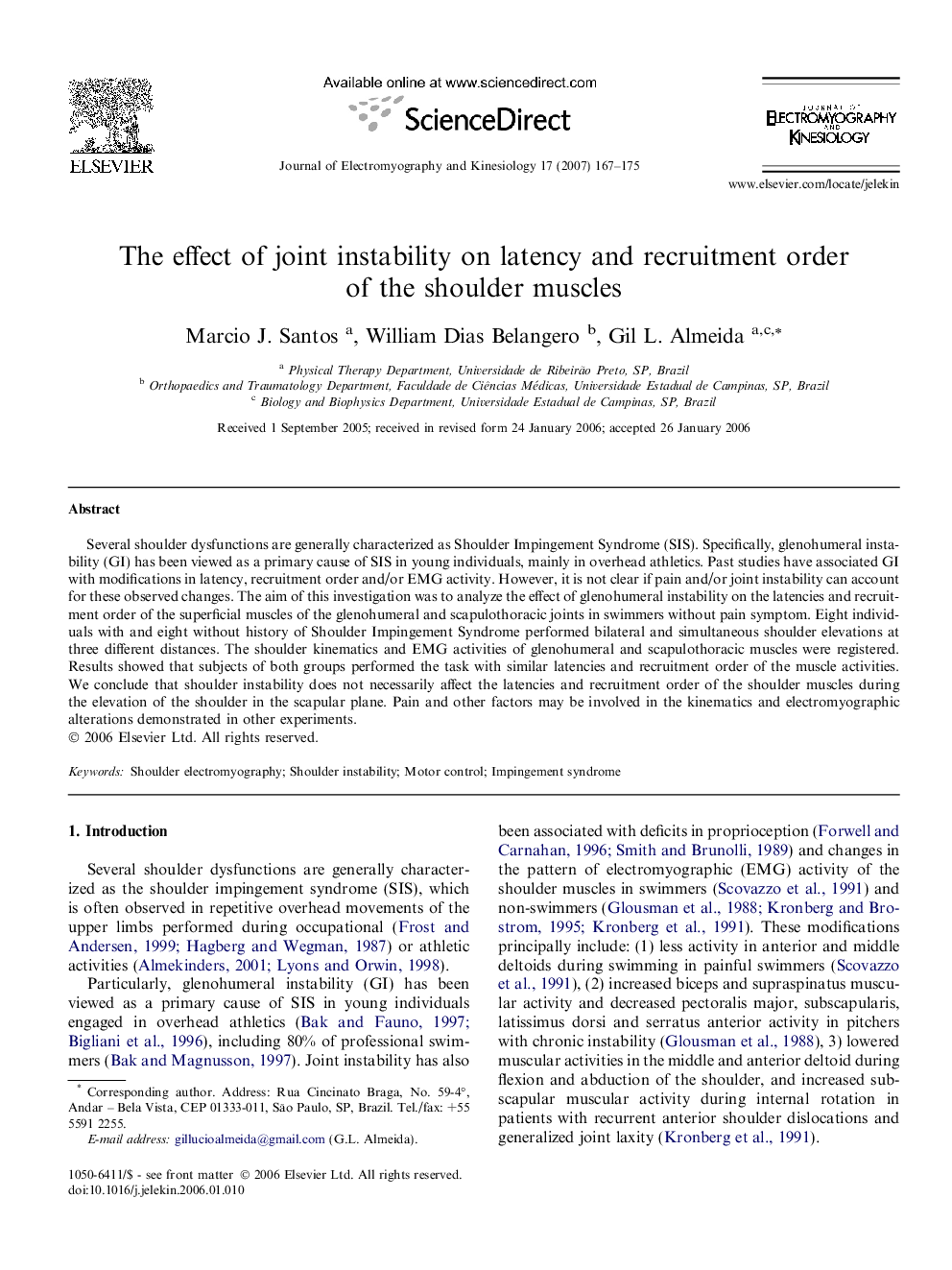| Article ID | Journal | Published Year | Pages | File Type |
|---|---|---|---|---|
| 4065391 | Journal of Electromyography and Kinesiology | 2007 | 9 Pages |
Several shoulder dysfunctions are generally characterized as Shoulder Impingement Syndrome (SIS). Specifically, glenohumeral instability (GI) has been viewed as a primary cause of SIS in young individuals, mainly in overhead athletics. Past studies have associated GI with modifications in latency, recruitment order and/or EMG activity. However, it is not clear if pain and/or joint instability can account for these observed changes. The aim of this investigation was to analyze the effect of glenohumeral instability on the latencies and recruitment order of the superficial muscles of the glenohumeral and scapulothoracic joints in swimmers without pain symptom. Eight individuals with and eight without history of Shoulder Impingement Syndrome performed bilateral and simultaneous shoulder elevations at three different distances. The shoulder kinematics and EMG activities of glenohumeral and scapulothoracic muscles were registered. Results showed that subjects of both groups performed the task with similar latencies and recruitment order of the muscle activities. We conclude that shoulder instability does not necessarily affect the latencies and recruitment order of the shoulder muscles during the elevation of the shoulder in the scapular plane. Pain and other factors may be involved in the kinematics and electromyographic alterations demonstrated in other experiments.
